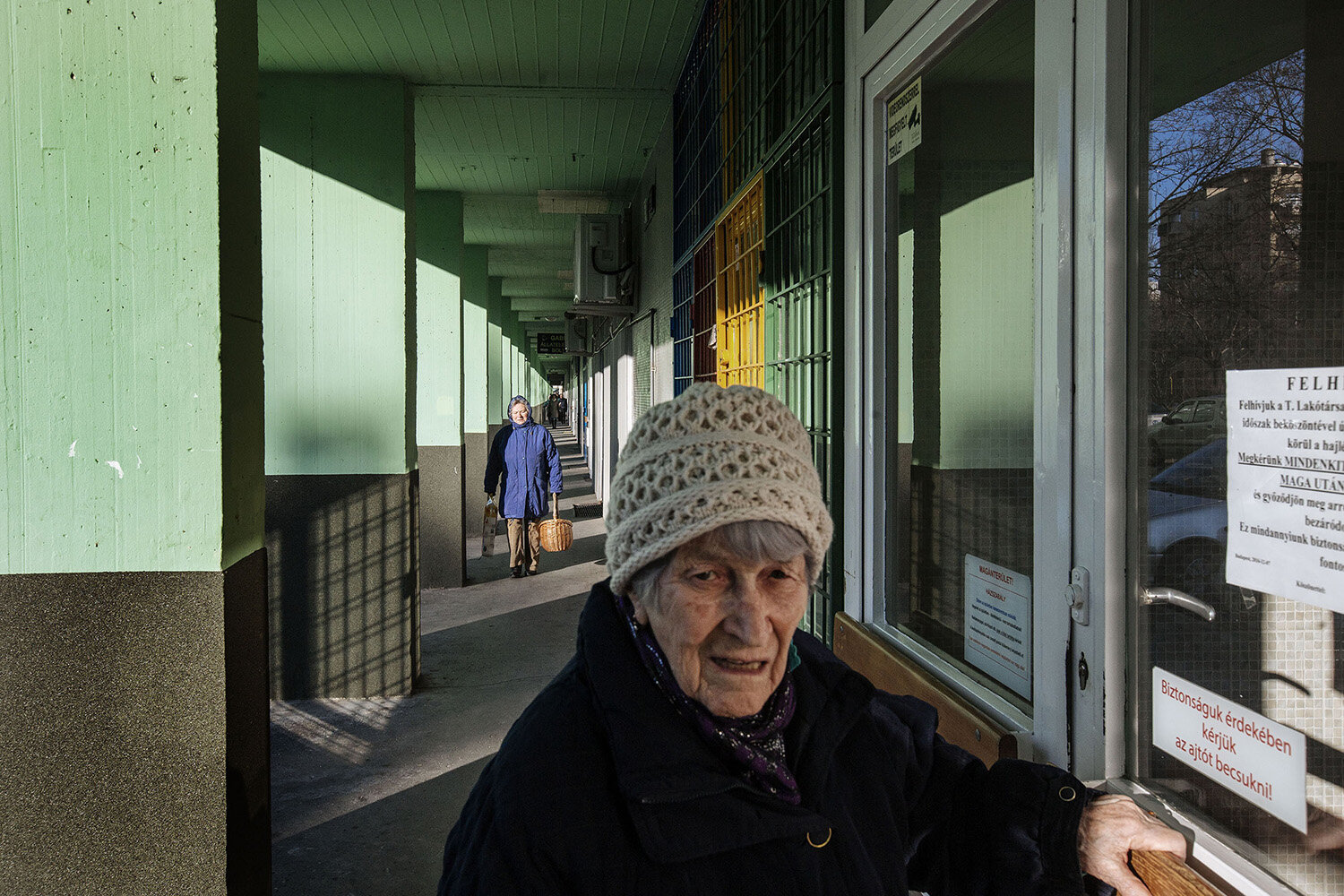
Both the detached house and the block of flats can provide a home for us but in a totally different manner. This observation is especially true in the case of this block of flats in Óbuda, containing 15 staircases and 884 flats; it is the biggest block in Hungary. Having the length of three football-pitches this 315-metres giant provides homes for a population that is equal to that of a village, almost 3000 people, and by no accident it is called a “village house” by everyone. Moreover, in the archway a whole shopping centre has evolved over the years. We can find here a hairdresser, beauty parlour, sweet-shop, lottery ticket shop, wine-shop, pet shop, bakery, real estate agency, souvenir shop, electrical appliance store – just to name a few of the 44 businesses.
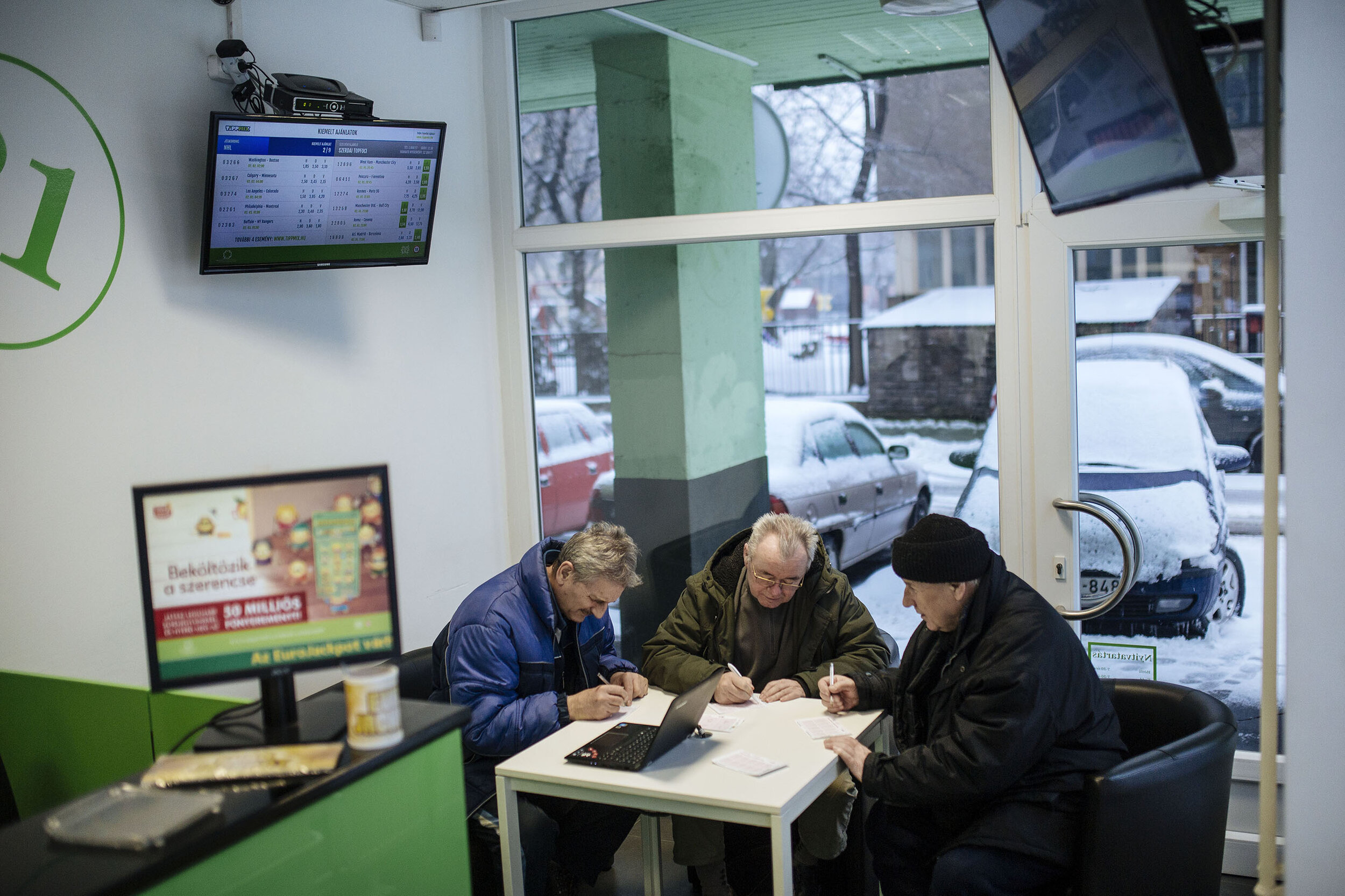
Nándi (right) and his friends are at the lottery ticket shop at half past seven. Every morning they manage to find a quarter of an hour to discuss political issues besides the events of the previous day and pulling each other’s leg. Only after this does Nándi walk Marci, a dog taken from a shelter.
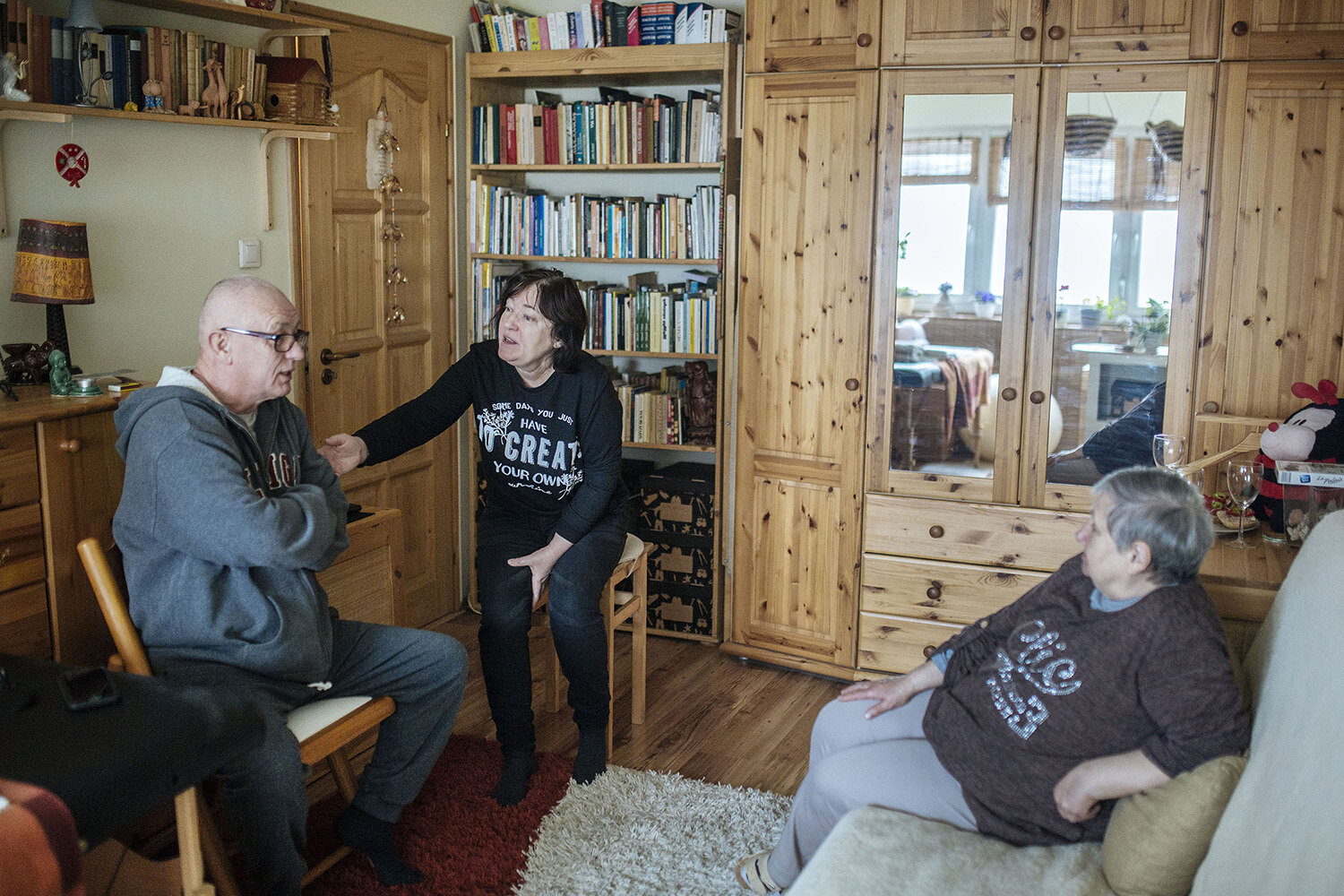
Judit (middle) became a grandmother; her daughter who lives in Australia had a baby. This special occasion is celebrated in the company of her neighbours, Gábor and Jutka, with morning champagne and some sandwiches.
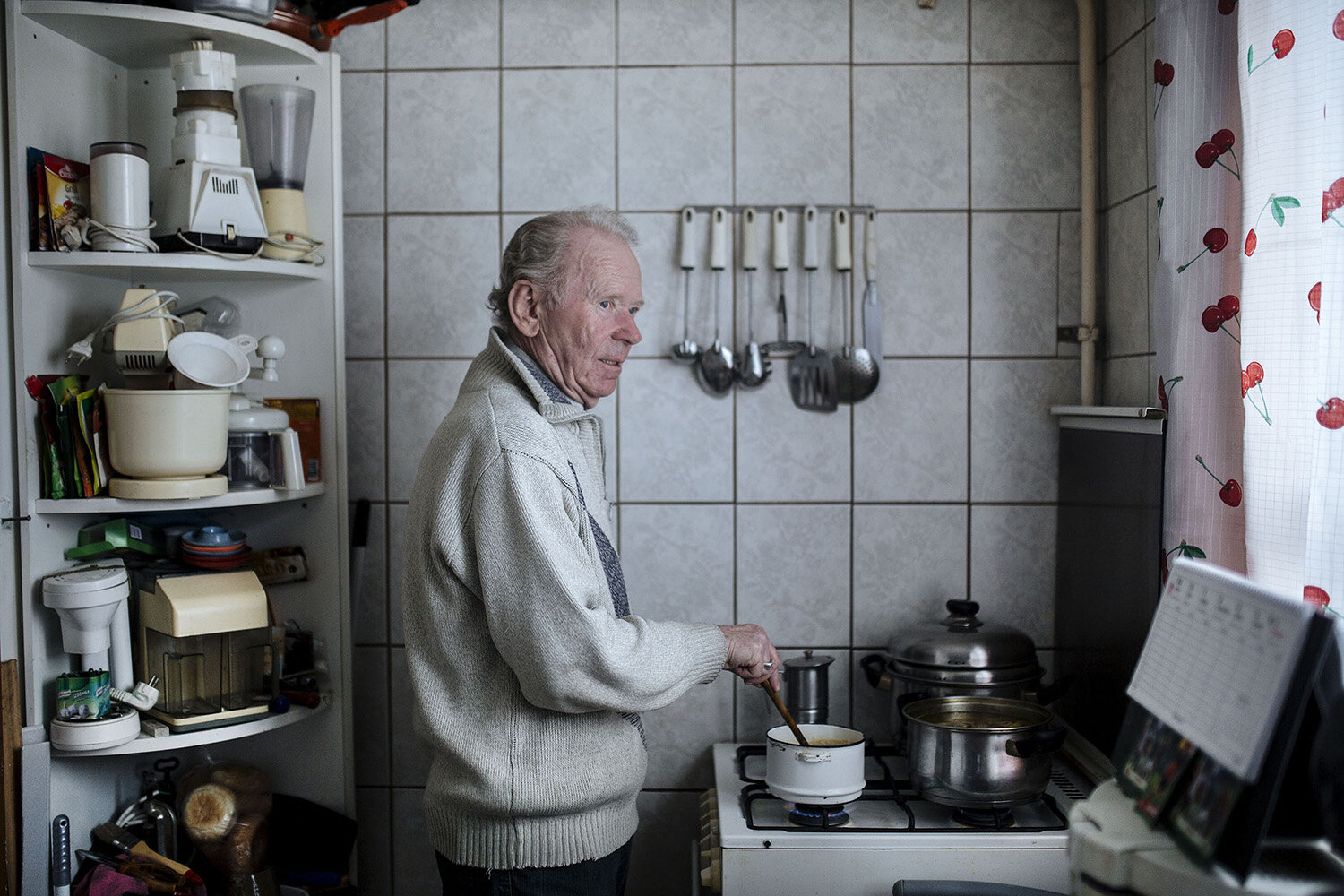
During its construction in the1970s the block was labelled as the exemplar of socialist flat-expansion. Gusztáv was among the earliest to move in with his family in a 50-square metre flat on the 8th floor with a “sunlit kitchen” and a magnificent view. Gusztáv used to hold a high position in the nearby textile factory; he would also manage a hotel and a restaurant. In the village house Gusztáv is currently a trusted manager, and in his free time he willingly cooks for the needy in the house.
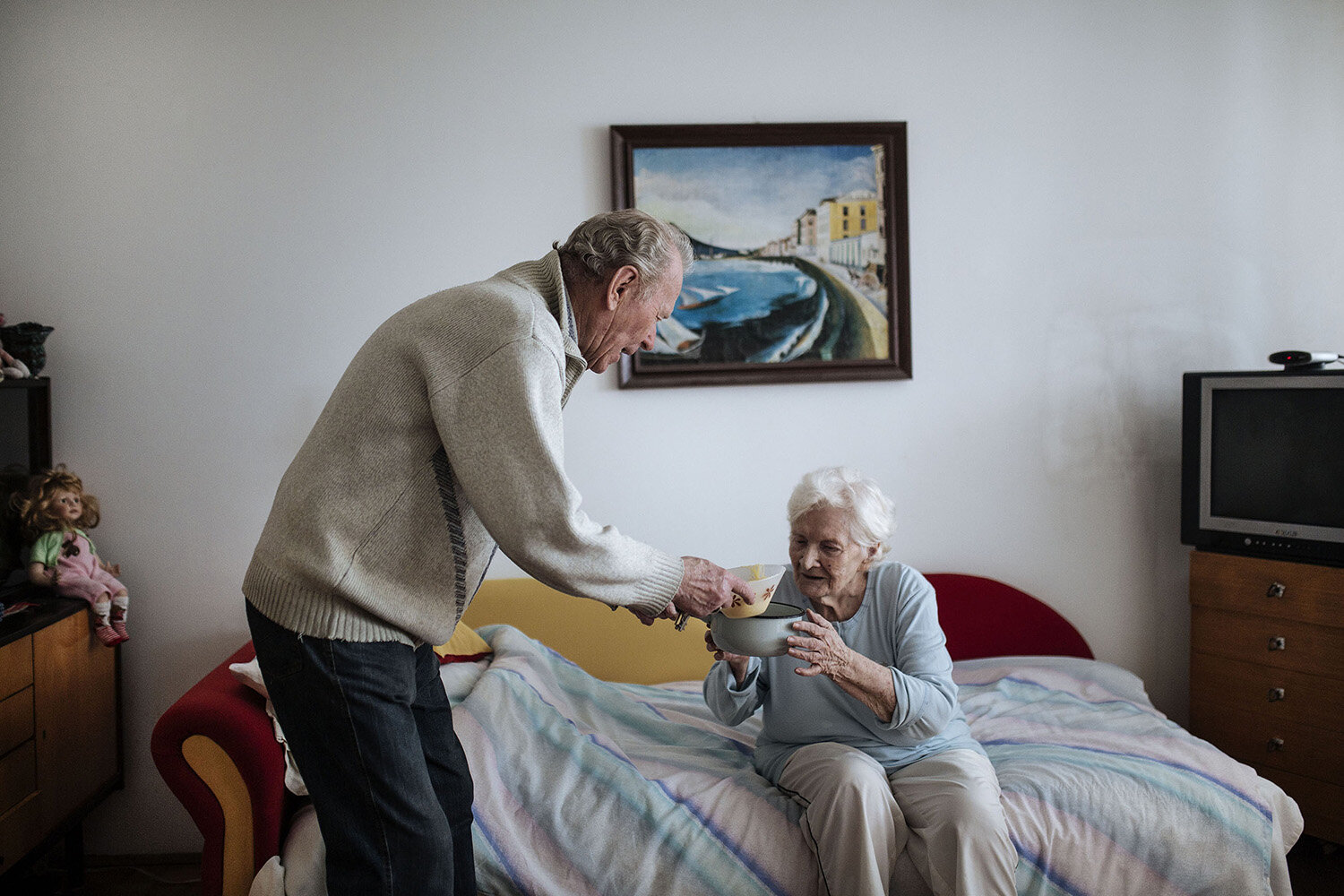
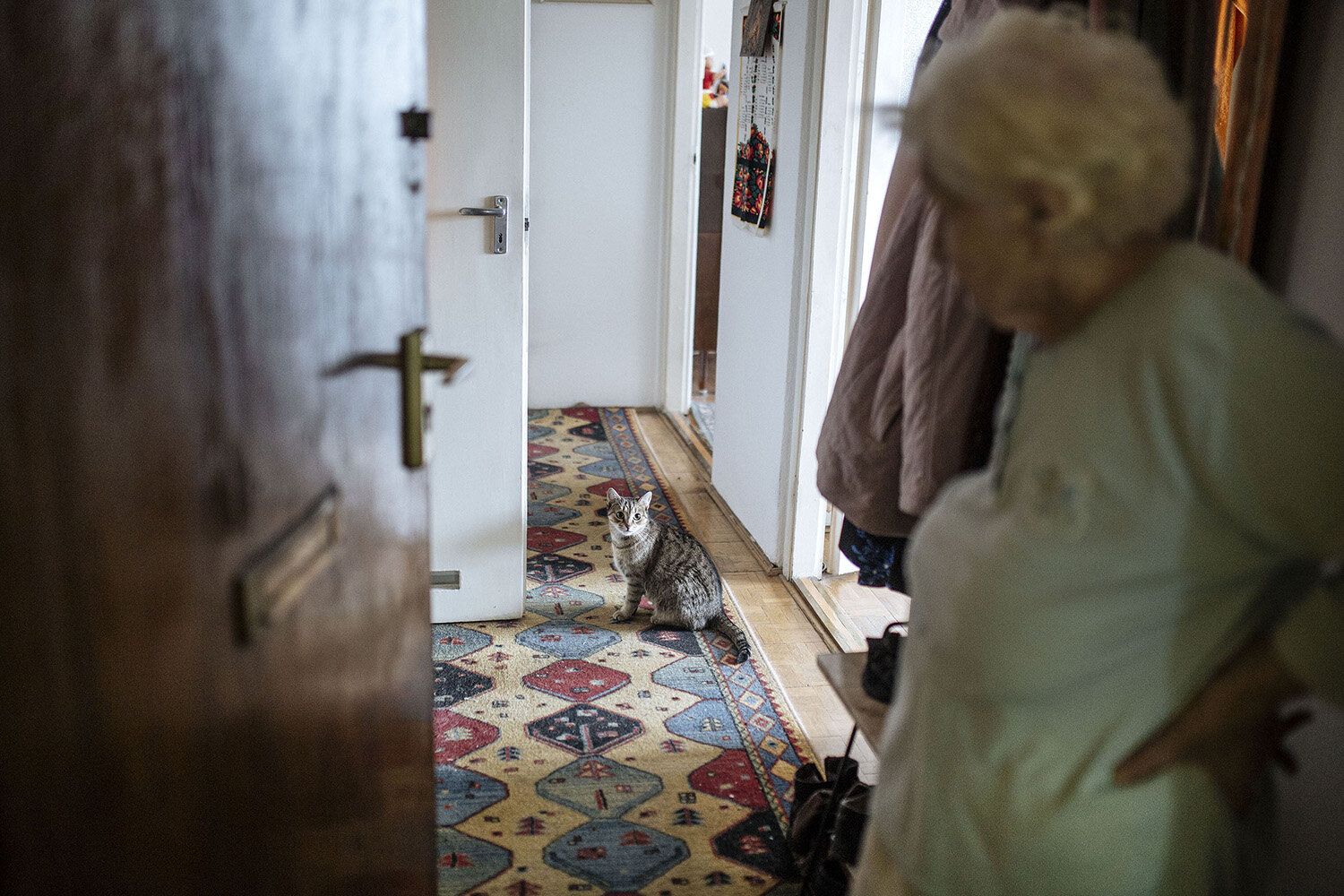
Only 10-15 per cent of the three thousand residents who moved in in the 1970s still live in the house. After the neighbouring single-floor, substandard houses had been torn down the panel building provided new and modern homes for the workers of the local shipyard and textile factory.
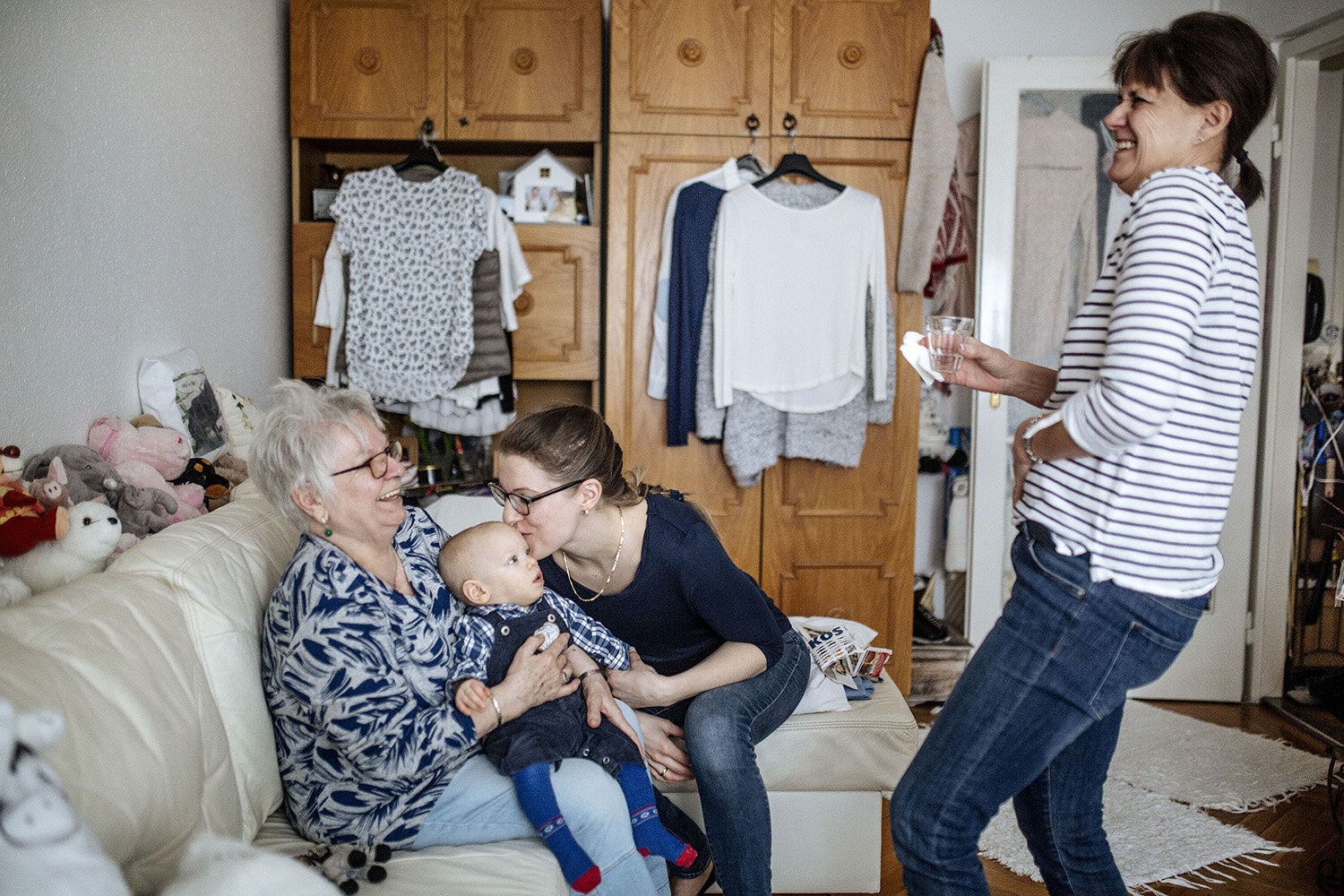
Bazsi is the youngest resident of the fourth staircase. His mother, Éva (middle) often gets together with her neighbours, Jutka (left) and Teri, who is the “professional” babysitter of this floor. The residents of the six flats on this level regularly celebrate birthdays and Christmases together.
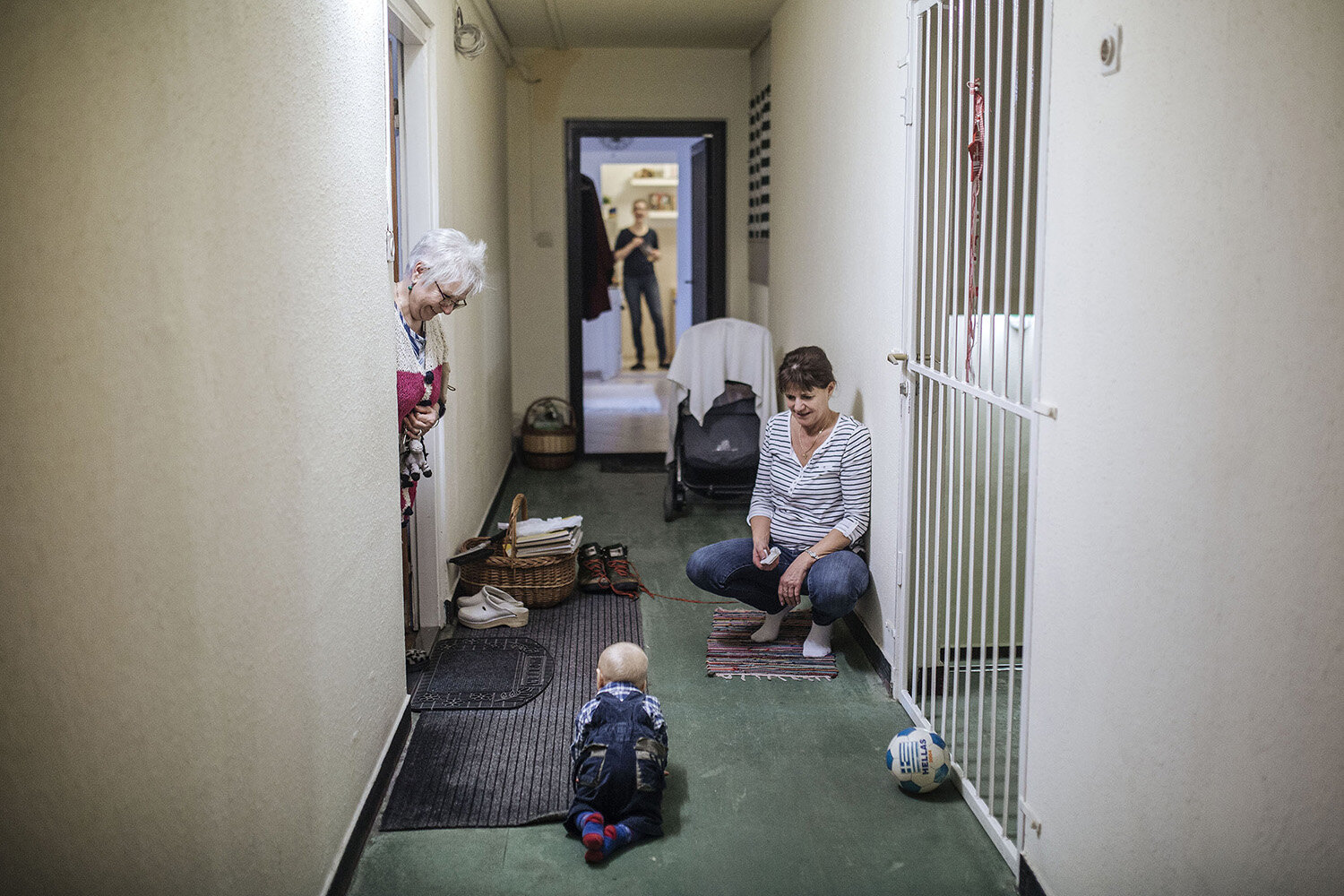
The building was originally designed for 50-60 years, but with modernization – that took place in the village house in 2009 – the lifespan can even be tripled. There are always many people moving into this house, because of its good location and good traffic access, so the block is still very popular on the real estate market.
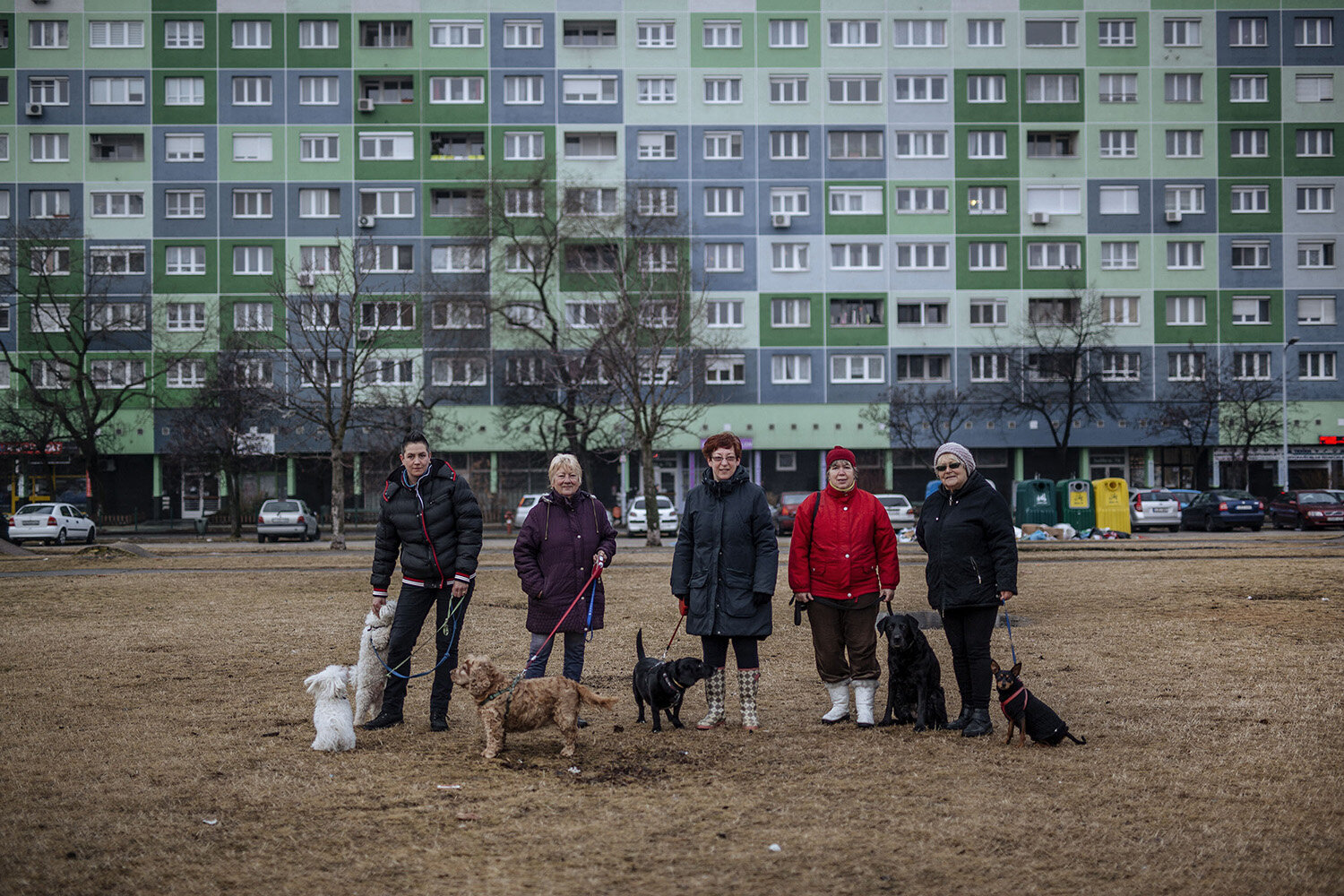
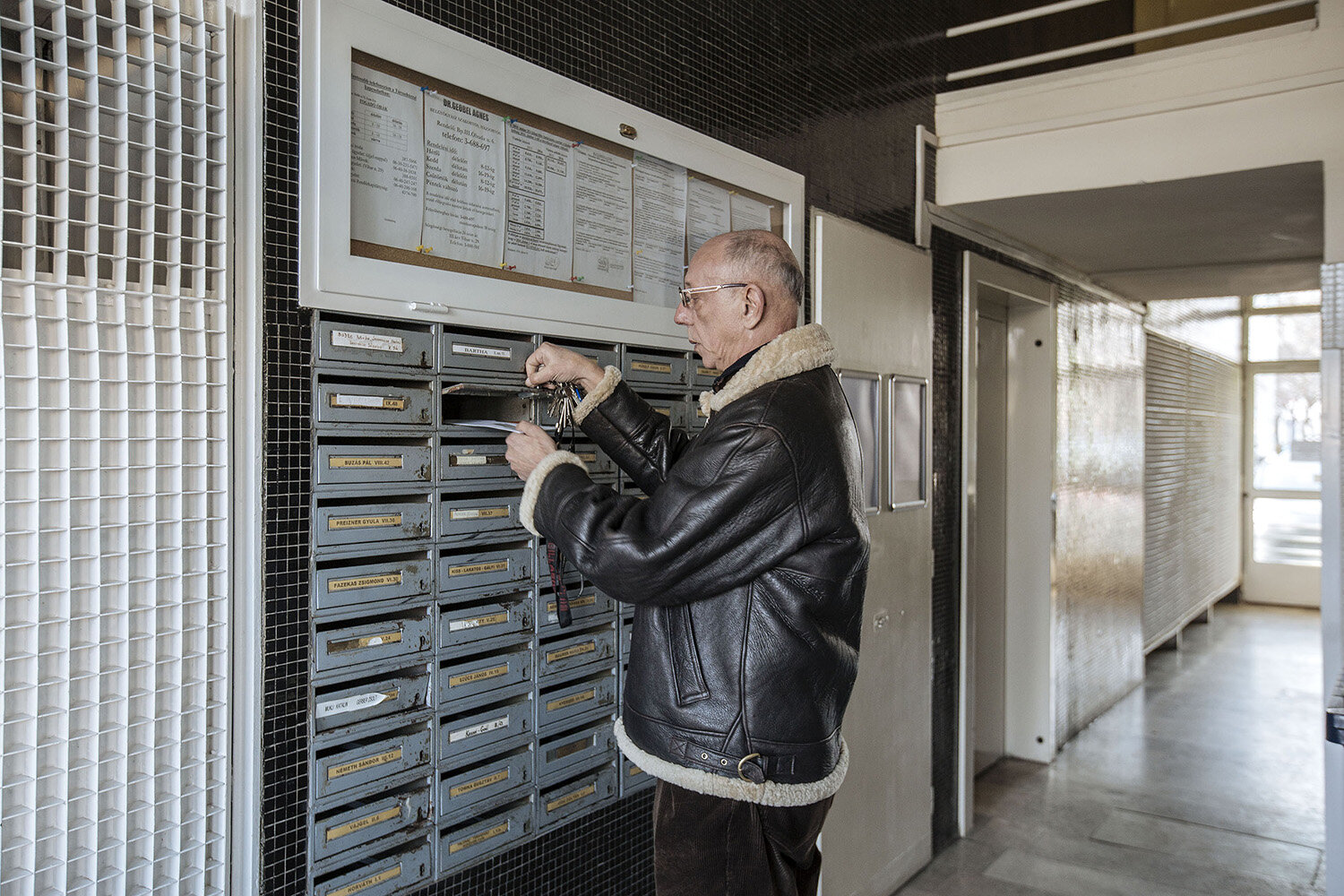
In the ten-storey staircases there are 60 two-roomed, 50 square metre flats respectively. On the 6th floor staircases are accessible and there are bigger flats here with more rooms and bigger kitchens.
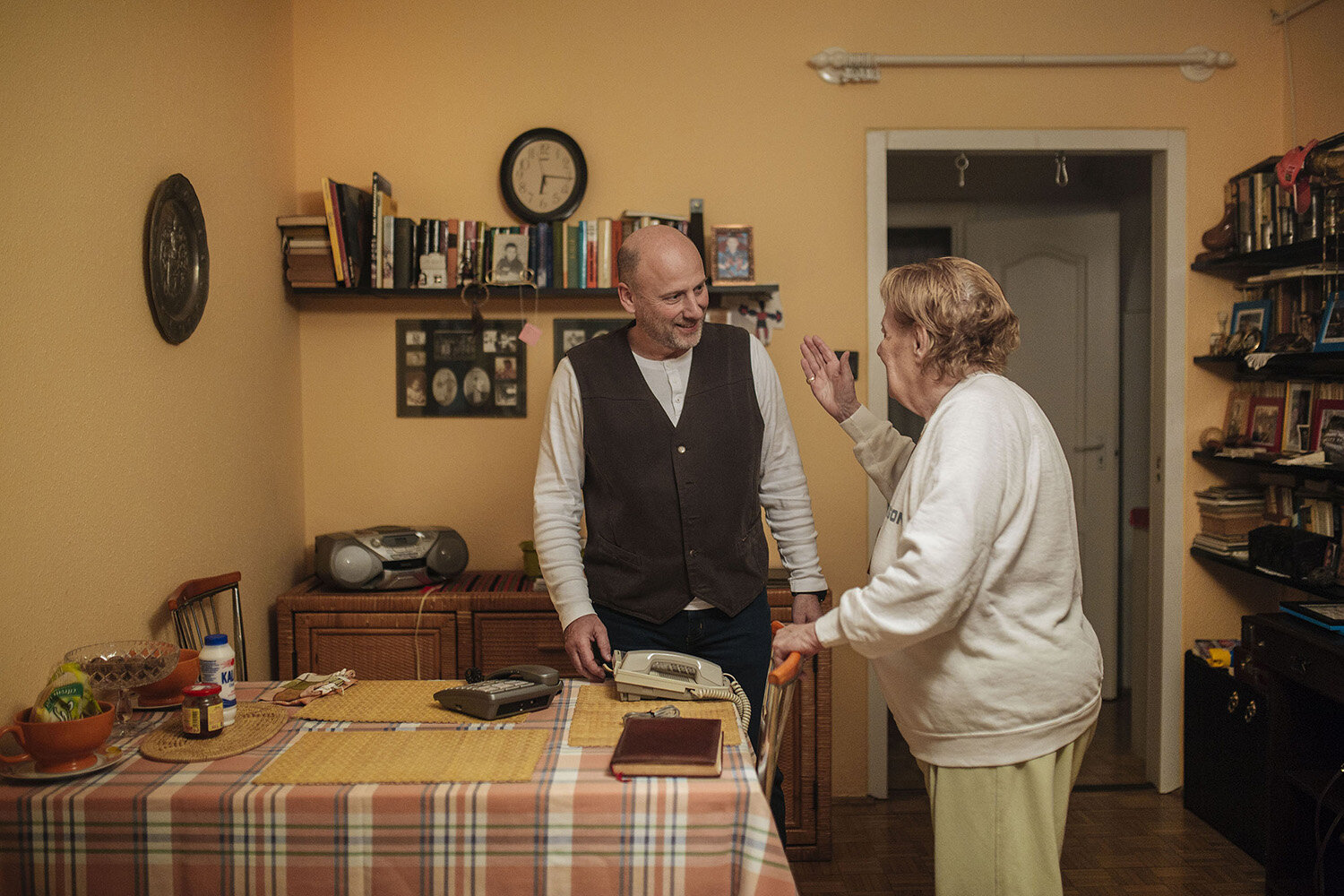
Tibor Pálos, the condominium board president, is referred to only as the mayor” by the residents. Tibor Pálos knows most of the residents personally and helps them if he can. Aunt Aranka needed a new landline telephone, as the old one is rather outdated.
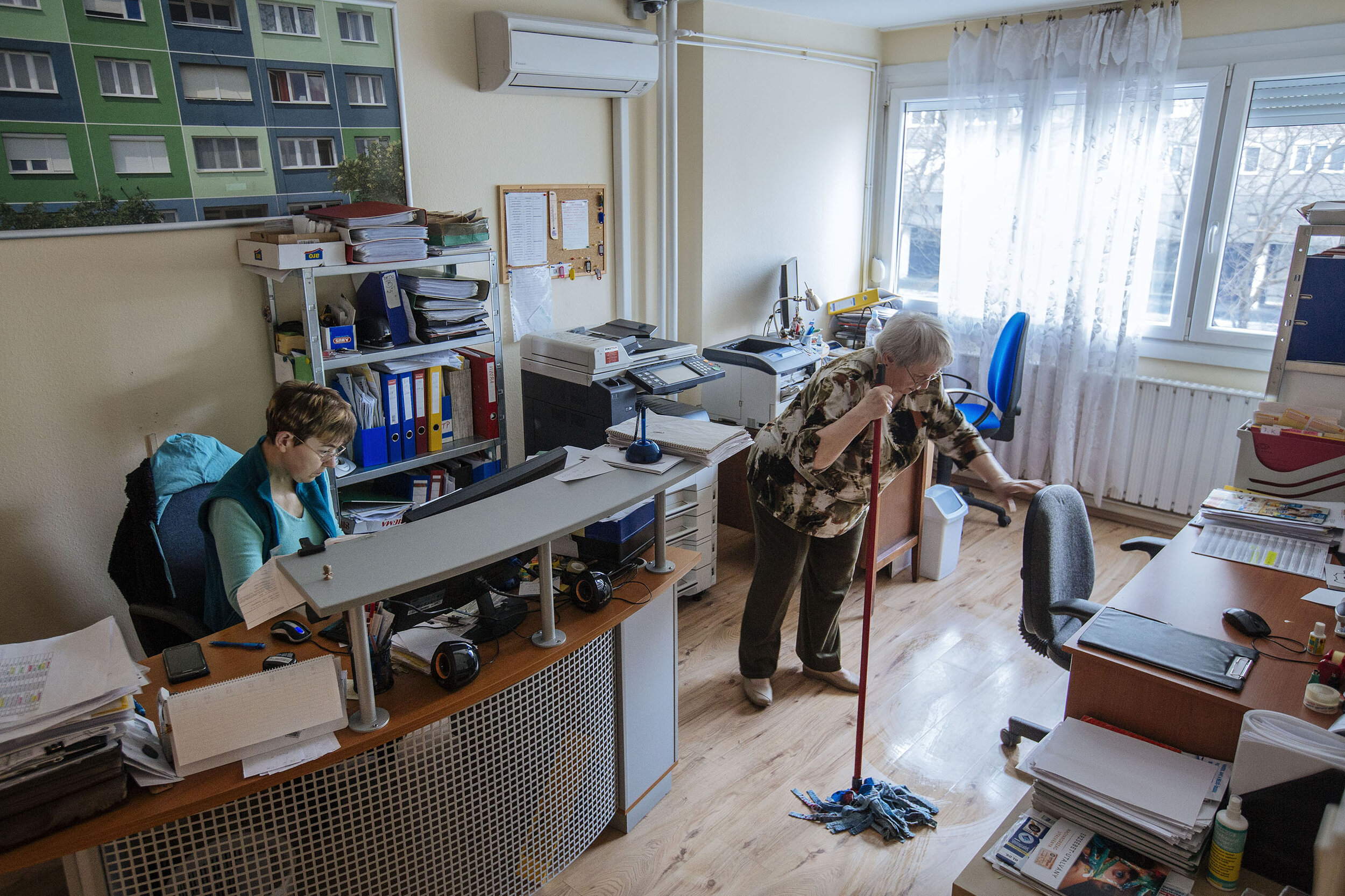
The condominium board of seven people manages all the daily affairs of the house.
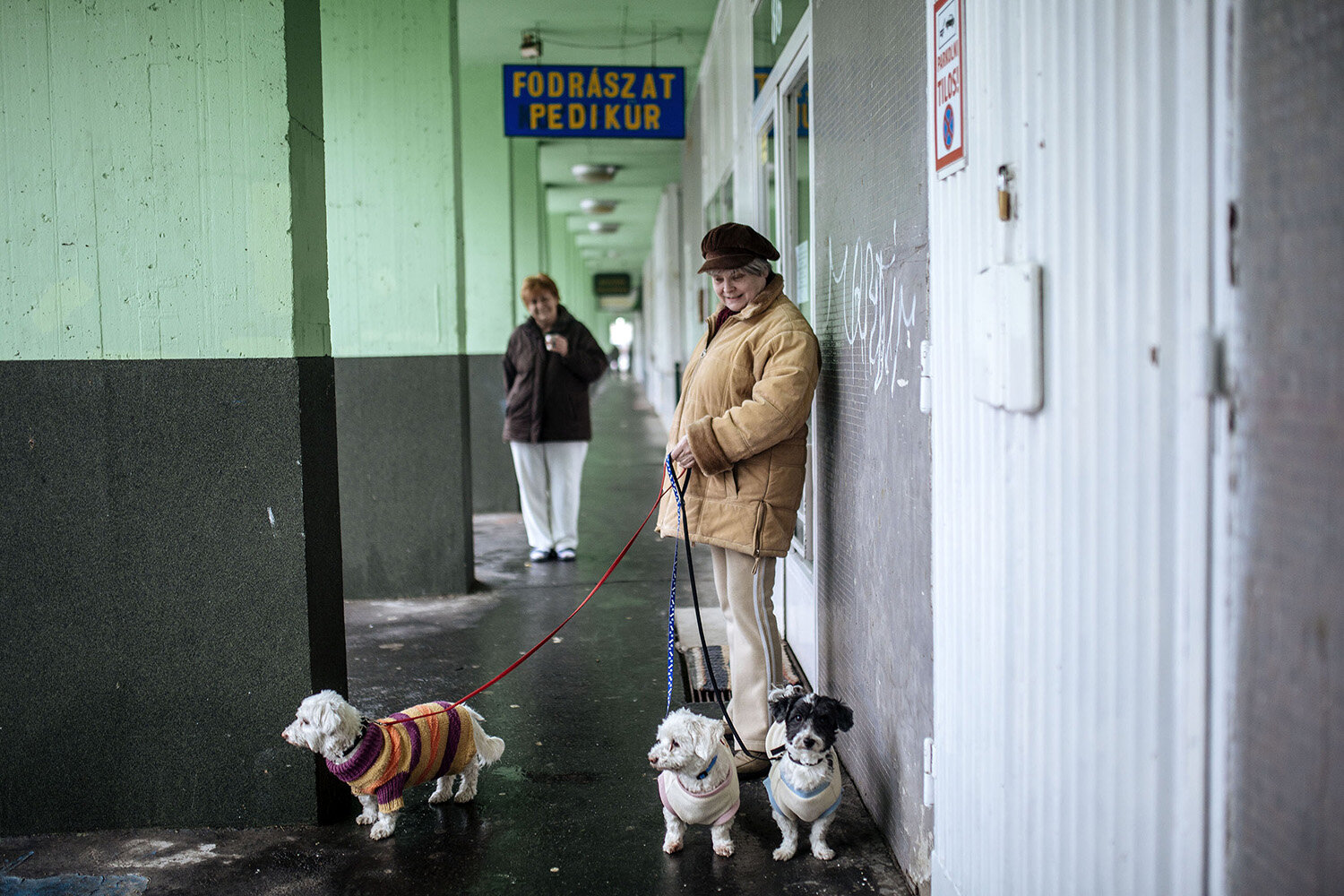
Sziszi, Szuszi and Dominó go around the building twice or three times a day with their owner, Marika.
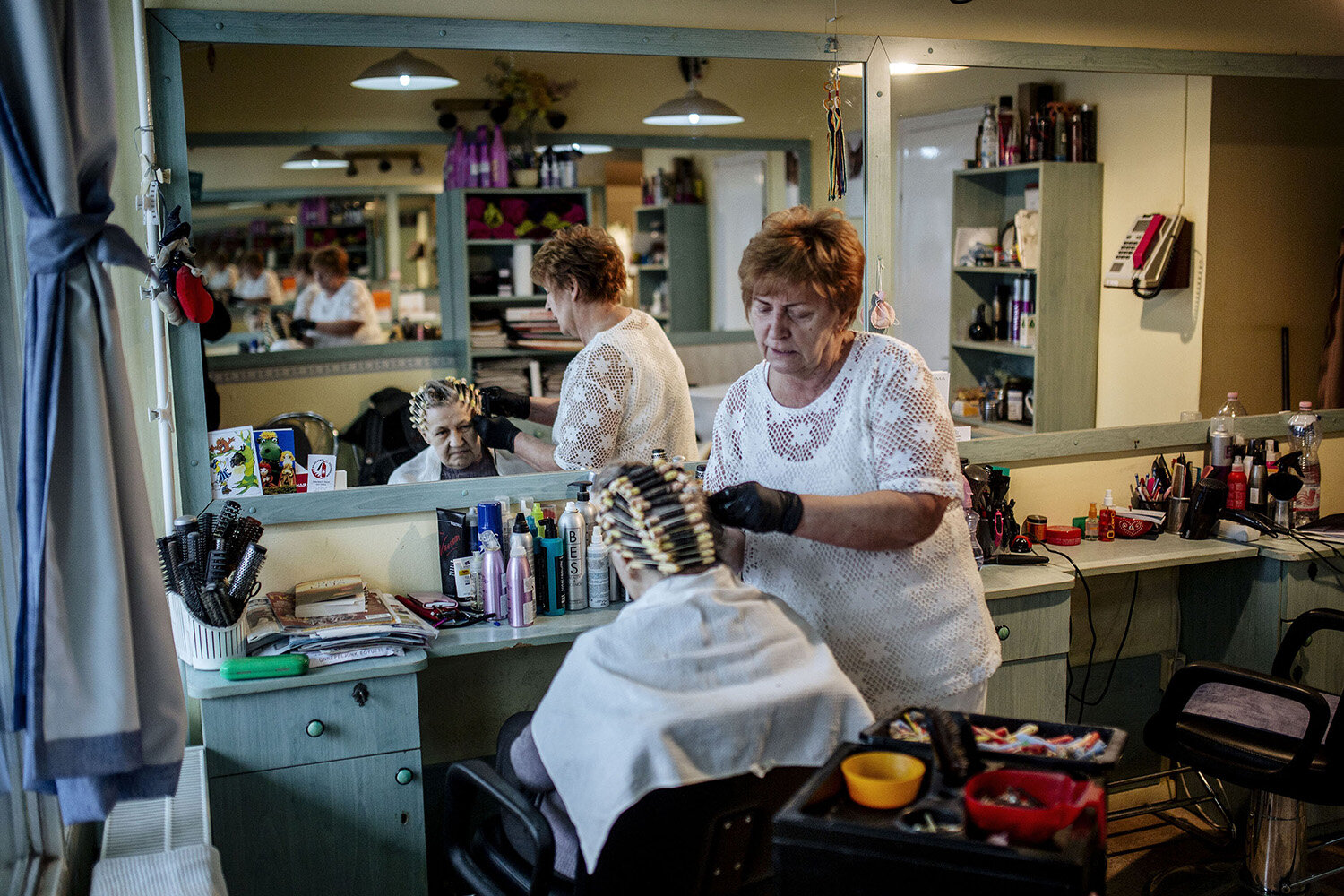
Marcsi opened her hairdressing salon in 1998, where clients can go in the morning one week, and in the afternoon in the following week.
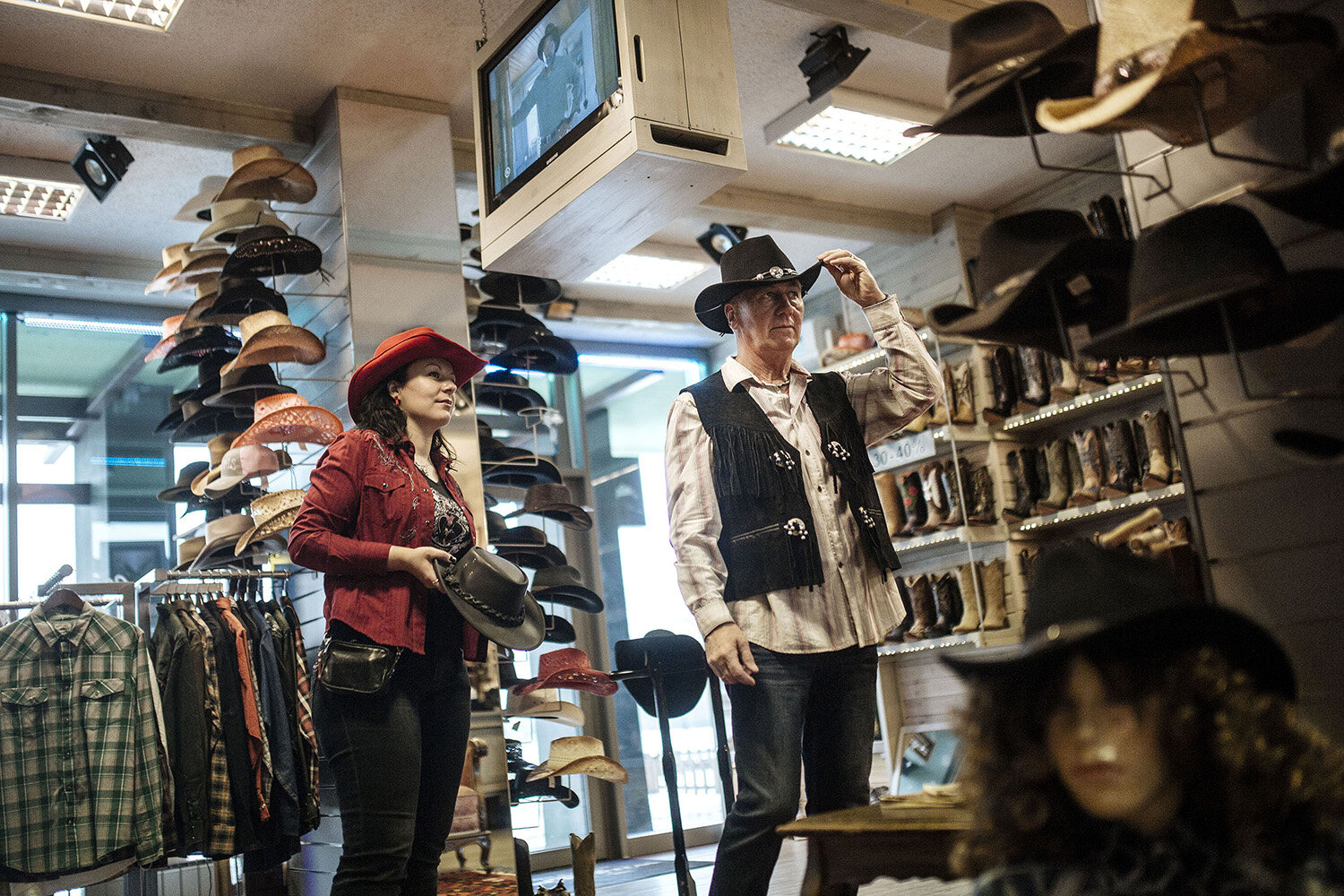
A business in the block advertises itself as “The gate of the Wild West”.
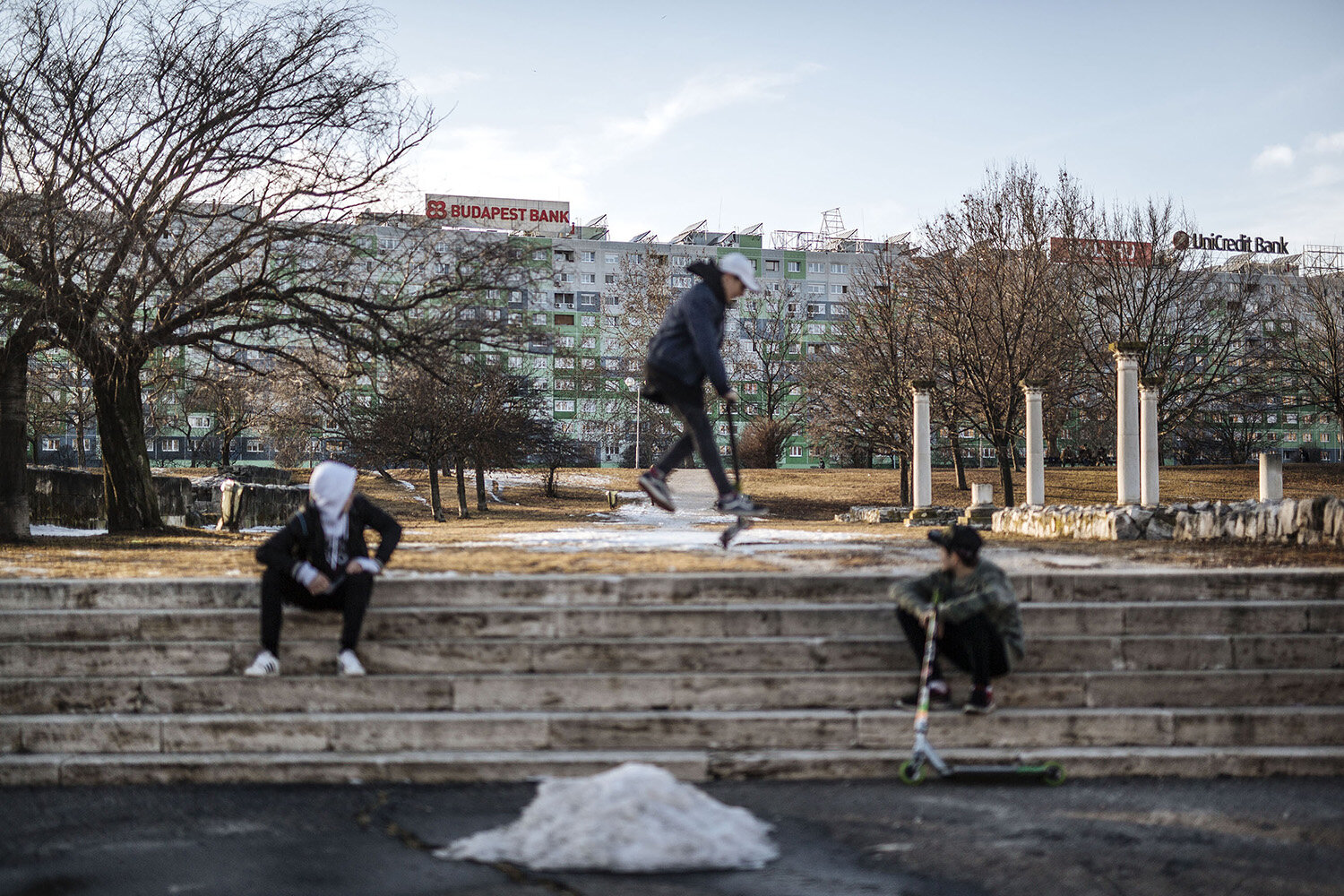
The bluish-greenish colour of the gigantic building in Szőlő (Grape) Street was deliberately chosen due to it being one of the symbols of Óbuda: the red grape and its leaves. From the ancient Roman age there were vineyards in this region.
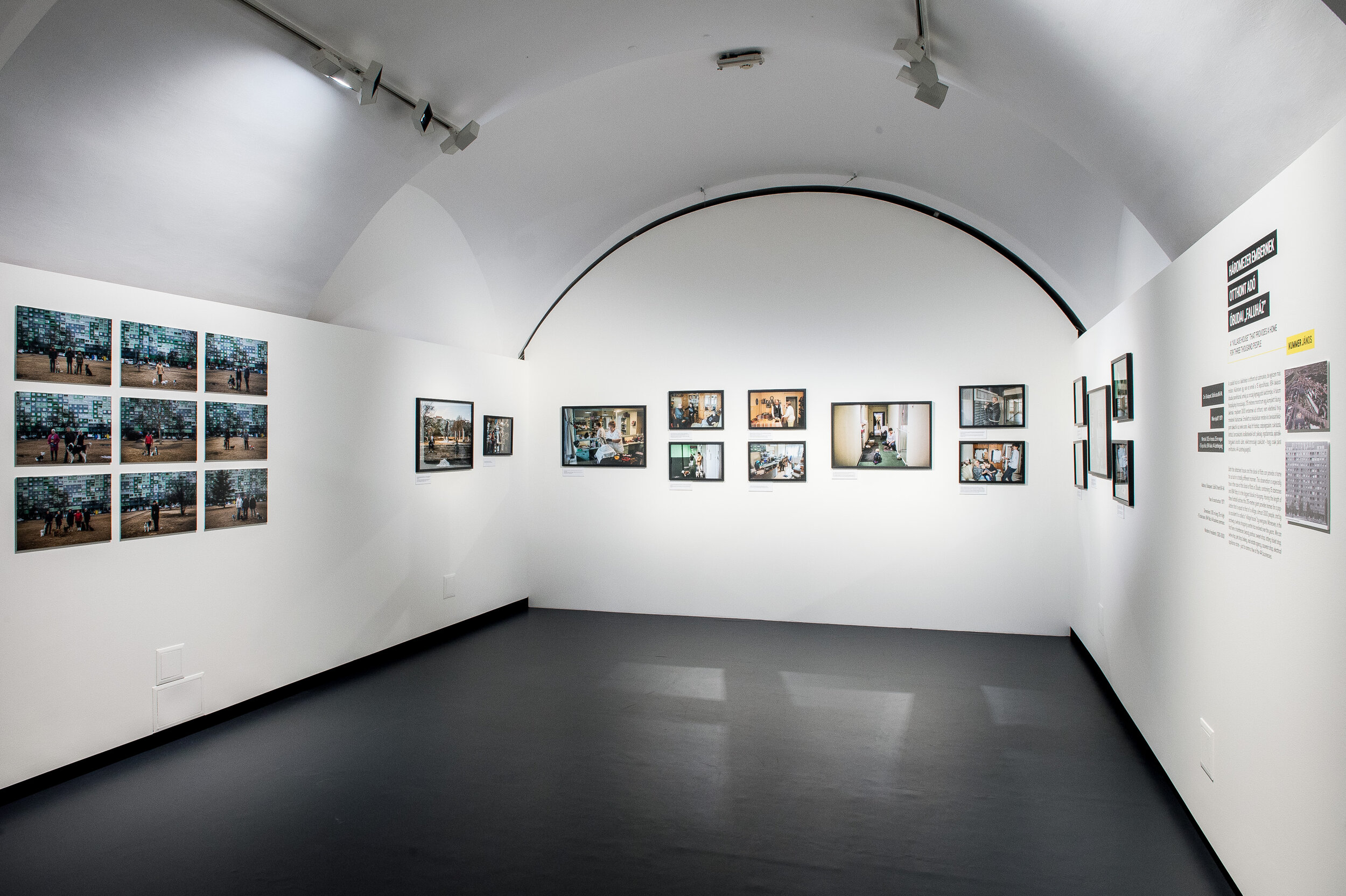
Enterior photo of the exhibition of the “A Shared House” curated by Istvan Viragvolgyi. Vertical village was part of the seven houses in seven picture stories in the photo exhibition of the Pannonhalma Archabbey. Photo taken by Sandor Ujvari

















Both the detached house and the block of flats can provide a home for us but in a totally different manner. This observation is especially true in the case of this block of flats in Óbuda, containing 15 staircases and 884 flats; it is the biggest block in Hungary. Having the length of three football-pitches this 315-metres giant provides homes for a population that is equal to that of a village, almost 3000 people, and by no accident it is called a “village house” by everyone. Moreover, in the archway a whole shopping centre has evolved over the years. We can find here a hairdresser, beauty parlour, sweet-shop, lottery ticket shop, wine-shop, pet shop, bakery, real estate agency, souvenir shop, electrical appliance store – just to name a few of the 44 businesses.
Nándi (right) and his friends are at the lottery ticket shop at half past seven. Every morning they manage to find a quarter of an hour to discuss political issues besides the events of the previous day and pulling each other’s leg. Only after this does Nándi walk Marci, a dog taken from a shelter.
Judit (middle) became a grandmother; her daughter who lives in Australia had a baby. This special occasion is celebrated in the company of her neighbours, Gábor and Jutka, with morning champagne and some sandwiches.
During its construction in the1970s the block was labelled as the exemplar of socialist flat-expansion. Gusztáv was among the earliest to move in with his family in a 50-square metre flat on the 8th floor with a “sunlit kitchen” and a magnificent view. Gusztáv used to hold a high position in the nearby textile factory; he would also manage a hotel and a restaurant. In the village house Gusztáv is currently a trusted manager, and in his free time he willingly cooks for the needy in the house.
Only 10-15 per cent of the three thousand residents who moved in in the 1970s still live in the house. After the neighbouring single-floor, substandard houses had been torn down the panel building provided new and modern homes for the workers of the local shipyard and textile factory.
Bazsi is the youngest resident of the fourth staircase. His mother, Éva (middle) often gets together with her neighbours, Jutka (left) and Teri, who is the “professional” babysitter of this floor. The residents of the six flats on this level regularly celebrate birthdays and Christmases together.
The building was originally designed for 50-60 years, but with modernization – that took place in the village house in 2009 – the lifespan can even be tripled. There are always many people moving into this house, because of its good location and good traffic access, so the block is still very popular on the real estate market.
In the ten-storey staircases there are 60 two-roomed, 50 square metre flats respectively. On the 6th floor staircases are accessible and there are bigger flats here with more rooms and bigger kitchens.
Tibor Pálos, the condominium board president, is referred to only as the mayor” by the residents. Tibor Pálos knows most of the residents personally and helps them if he can. Aunt Aranka needed a new landline telephone, as the old one is rather outdated.
The condominium board of seven people manages all the daily affairs of the house.
Sziszi, Szuszi and Dominó go around the building twice or three times a day with their owner, Marika.
Marcsi opened her hairdressing salon in 1998, where clients can go in the morning one week, and in the afternoon in the following week.
A business in the block advertises itself as “The gate of the Wild West”.
The bluish-greenish colour of the gigantic building in Szőlő (Grape) Street was deliberately chosen due to it being one of the symbols of Óbuda: the red grape and its leaves. From the ancient Roman age there were vineyards in this region.
Enterior photo of the exhibition of the “A Shared House” curated by Istvan Viragvolgyi. Vertical village was part of the seven houses in seven picture stories in the photo exhibition of the Pannonhalma Archabbey. Photo taken by Sandor Ujvari